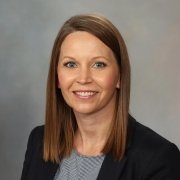Empowering Health Professions Educators for Interprofessional Continuing Medical Education through Faculty Development
MedEdPearls November 2025: Bridging Silos in Health Care Education

In today’s complex health care landscape, collaboration is not optional – it is essential. Health care delivery is increasingly interdependent. Health care providers must coordinate care across disciplines, settings, and systems. Interprofessional education (IPE) has established its reputation, ensuring collaborative practices focused on improving patient satisfaction, patient outcomes, provider job satisfaction, and delivery of services. Medical and health professions educators are expected to balance dual roles as clinicians and educators, yet many feel underprepared to teach effectively in IPE settings. Furthermore, educators are not only responsible for teaching future health care providers but also for maintaining their own professional development through continuing medical education (CME). It is important to note that at many institutions, CME, faculty development, and IPE may be managed by different teams or departments. This separation can sometimes lead to missed opportunities for synergy based on the focus of these activities. For example, CME’s focus is on providing ongoing education for health care professionals, faculty developers focus on preparing educators, and IPE’s focus is on establishing collaborative practices. IPE offers a powerful and relevant context for CME, allowing faculty to engage in collaborative learning that mirrors the realities of modern health care practice. When planning IPE within CME, faculty developers should consider the organizational structures and seek collaborations across groups to maximize impact.
However, facilitating IPE in CME environments can be challenging and, if not thoughtfully planned, can reinforce siloed learning with health care providers attending separate sessions, engaging in discipline-specific discussions, and missing opportunities to learn with, from, and about each other. Without effective faculty development to prepare medical and health professions education faculty how to do this, IPE in CME environments cannot be fully realized. As health care provision increasingly relies on effective teamwork across professions, educators must be equipped not only with clinical expertise but also with the knowledge, skills, and attitudes necessary to facilitate interprofessional learning. Well-designed faculty development programs help educators understand and model collaborative practice, address gaps in team-based care, and foster environments where professionals learn with, from, and about each other. This, in turn, leads to improved team functioning, better patient outcomes, and a stronger culture of safety and quality in health care.
What should be considered for faculty development programs in IPE?
- Conduct an Environmental Scan: Identify where IPE, CME, and faculty development activities are currently taking place and who is engaging with these groups for alignment and collaboration.
- Conduct a Needs Assessment: Identify the specific learning needs, attitudes, and readiness for change among faculty.
- Align with Interprofessional Competencies: Integrate core competencies such as values/ethics, roles and responsibilities, communication, and teamwork into program goals and objectives.
- Engage Diverse Stakeholders: Involve representatives from all relevant professions, leadership, and, where possible, patients or community members in planning and delivery. IPE can be advanced through strategic partnerships and collaborations.
- Design Experiential and Interactive Learning: Use active learning strategies including: case based workshops, team-building exercises, peer coaching, and simulation to foster real-world application. Panel discussions provide an excellent forum for bringing together diverse health professionals to share perspectives, foster dialogue, and model collaborative practice.
- Develop Facilitation Skills: Provide training in facilitation, conflict management, and group dynamics to ensure faculty can effectively lead interprofessional learning.
- Support Ongoing Reflection and Feedback: Incorporate opportunities for self-assessment, peer feedback, and reflection on team functioning and collaborative practice.
- Address Barriers and Provide Resources: Identify and address organizational, cultural, or logistical barriers, and ensure faculty have access to necessary tools, mentoring, and support.
- Evaluate Impact: Measure changes in individual and team performance, competence, and patient outcomes to assess program effectiveness and guide continuous improvement.
Faculty developers and CME educators have a unique opportunity to break down professional silos by partnering together to equip health professions faculty in designing CME activities that bring together multiple professions for shared learning that emphasizes IPE principles. By intentionally integrating IPE into CME activities, we can create a culture of shared expertise, mutual respect, and ultimately, better patient care.
About the MedEd Pearls Author
The MedEdPearls are a collaborative, peer-reviewed, monthly brief intended to provide practical tips and strategies for medical and health professions educators to enhance teaching and learning.

Carrie Bowler
EdD, MLSCM (ASCP)
- Assistant Professor of Medical Education, Health Care Administration, and Laboratory Medicine and Pathology; Operations Administrator, Mayo Clinic’s School of Continuous Professional Development
- Jean Bailey, PhD – Virginia Commonwealth University School of Medicine
- Carrie Bowler, EdD, MS, MLSCM (ASCP) – Mayo Clinic School of Continuous Professional Development
- Kristina Dzara, PhD, MMSc (Educators ’16; Assessment ’16; HCE 2.0 ’17) – Saint Louis University School of Medicine
- Shanu Gupta, MD, SFHM – University of South Florida Morsani College of Medicine and Tampa General Hospital
- Jennifer Hillyer, PhD – Northeast Ohio Medical University
- Larry Hurtubise, PhD, MA (HCE 2.0 '16) – The Ohio State University
- Anna Lama, EdD, MA – West Virginia University School of Medicine
- Machelle Linsenmeyer, EdD, NAOME (Assessment ’07) – West Virginia School of Osteopathic Medicine
- Skye McKennon, PharmD, BCPS, ACSM-GEI – Washington State University Elson S. Floyd College of Medicine
- Rachel Moquin, EdD, MA – Washington University School of Medicine
- Stacey Pylman, PhD – Michigan State University College of Human Medicine
- Leah Sheridan, PhD – Northeast Ohio Medical University
- Lonika Sood, MBBS, MHPE – Washington State University Elson S. Floyd College of Medicine
- Mark Terrell, EdD – Lake Erie College of Osteopathic Medicine
- Stacey Wahl, PhD – Virginia Commonwealth University School of Medicine
